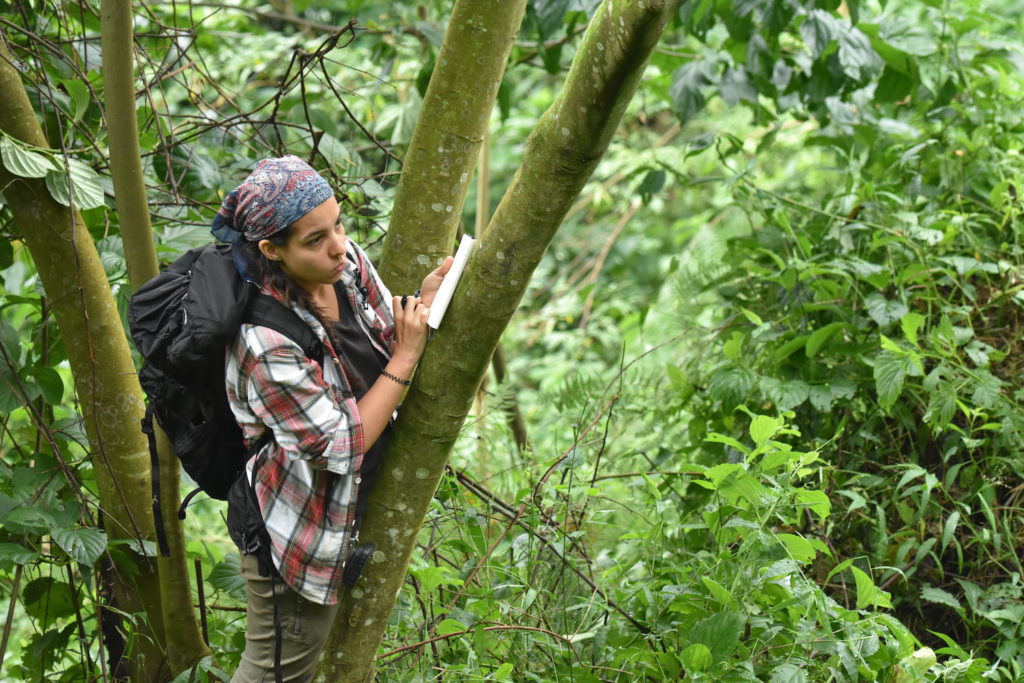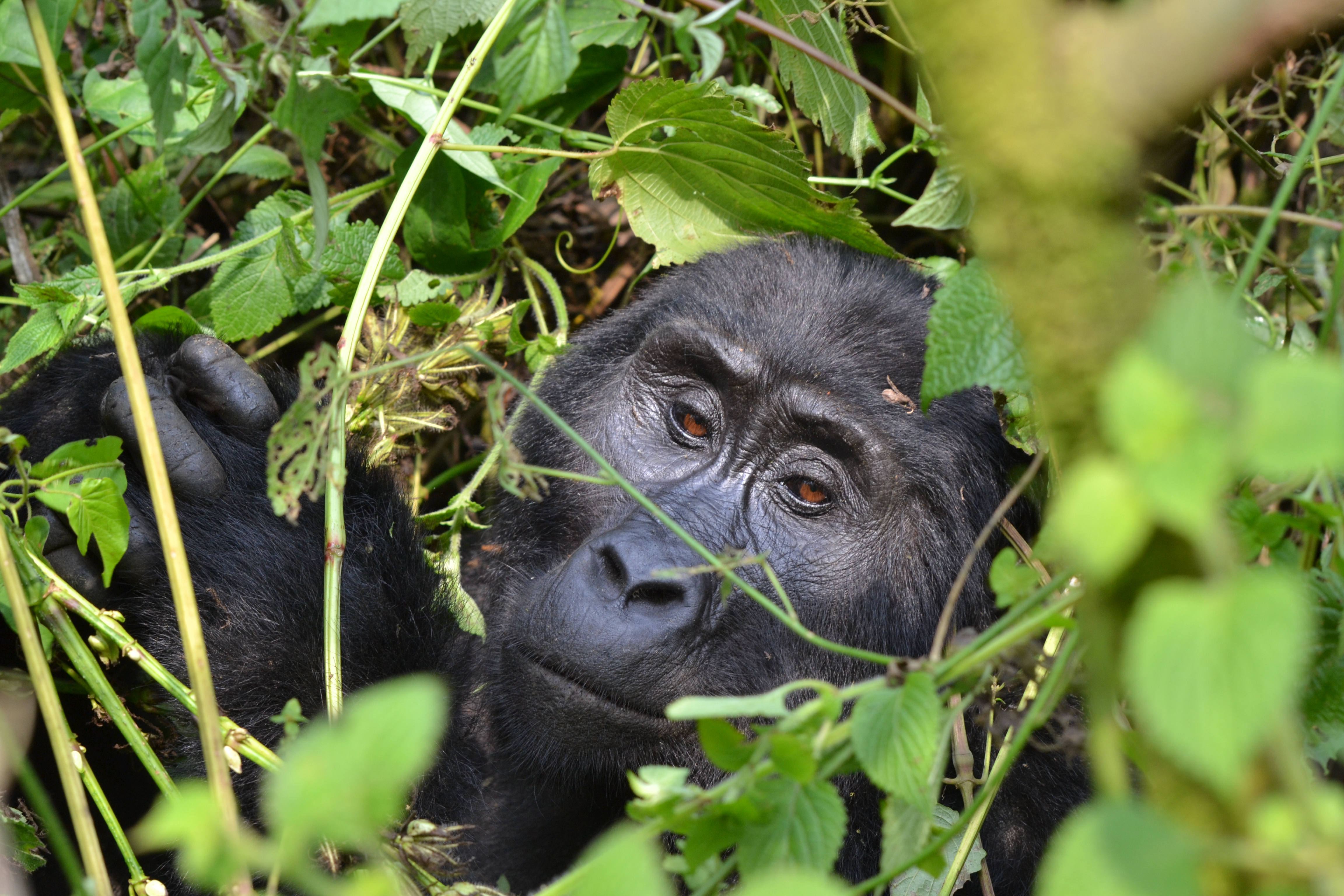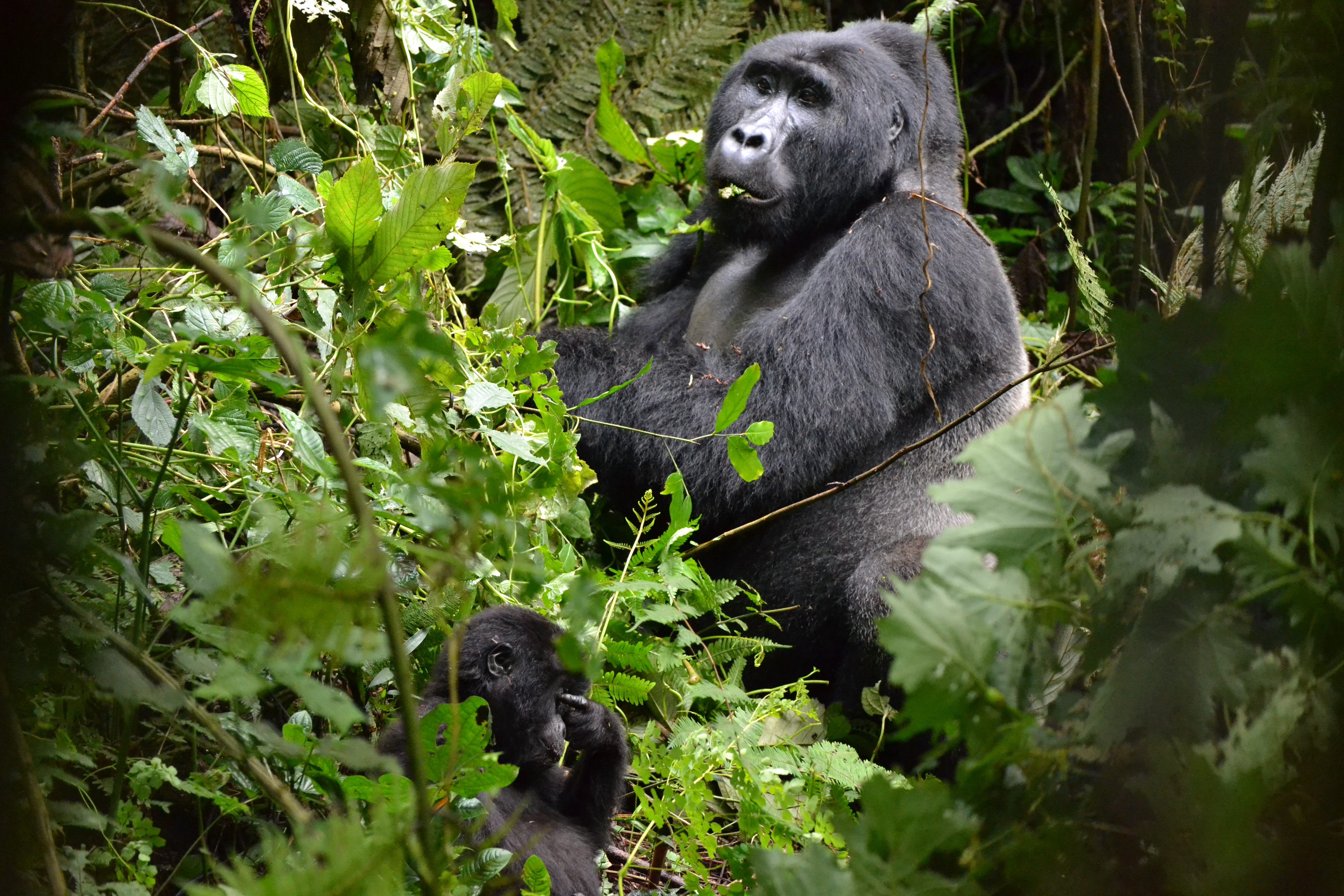
Effect of Tourism on Mountain Gorilla Social Cohesion

For this quarter of Hot Topics in primate welfare, we are featuring the research of Dr. Raquel Costa, Postdoctoral Fellow of the Japan Society for the Promotion of Science at the Japan Monkey Center. Dr. Costa studies gorilla-human interactions in the Bwindi Impenetrable National Park, Uganda. In the work we are featuring here, Dr. Costa and colleagues examined the effects of tourist presence and proximity on mountain gorilla social cohesion and found that gorillas showed immediate changes in their social behavior, forming closer associations when tourists were nearby. The findings emphasize the importance of enforcing tourism guidelines to ensure the long-term sustainability of gorilla tourism. To learn more about this research and the impact tourist’s play on mountain gorilla’s sociality, read the interview on Dr. Costa’s research and experiences studying these apes in the wild.
An Interview with Dr. Raquel Costa
What inspired your work on gorilla tourism and its impact on mountain gorilla’s sociality?
As a student and tourist, I visited habituated gorillas in Bwindi Impenetrable Forest, Uganda. While writing a proposal about infants’ behavior, I was thrilled to see the gorillas up close, including many playful infants. However, other visitors were also enthusiastic, with some attempting to capture the “perfect photo shot.” As the visit continued, we gradually approached the animals, causing the adult gorillas to move away while the infants continued to play. The silverback gazed at us, bearing fresh wounds from a recent fight with a solitary male. He was vigilant, closely monitoring our movements and positioning himself between us and the infants. I initially pondered whether this behavior was triggered by that fight with another male or because of our presence. Therefore, I redirected my focus towards studying the behavioral impacts of tourist presence on their behavior.
What were there challenges you faced when collecting observational data in the field?
At first, I had to get used to climbing the mountain on a daily basis. Bwindi can be impenetrable. Furthermore, I had to contend with the challenges of conducting research while prioritizing tourists’ opportunities to observe the gorillas (I was required to stay behind the tourists). Although the trackers were always patient and understanding, I was the sole data collector and had a daily limit of only four hours of contact with the gorillas. So, I was constantly rushing to collect data and get the most out of those 4 hours. It took some time to determine the best protocol and train myself, which is why I decided to use short and rotating focal sessions. That way, I could cover all the different conditions and observe all the individuals involved.
How did you measure the effects of human presence on the gorilla’s social cohesion?

We studied one group of mountain gorillas of 15 individuals (of all age-sex classes) living in Bwindi Impenetrable National Park, Uganda. Based on our previous analysis (Costa et al., 2023b), we observed that gorillas tend to increase their social interactions during tourist visits and show signs of stress (increased self-scratching). In that analysis, we found that their behavioral changes were more prominent when tourists were closer than 3m. Building upon these findings, we sought to investigate if gorillas use social buffering, a mechanism to cope with stress. The main idea here was to investigate whether the proximity between individual gorillas (i.e., within arm’s reach) changed in the presence of tourists. To do this, I observed gorillas before, during, and after tourist visits using focal continuous sampling of individuals within my focal animal’s arm’s reach. Using recent social network analysis methods, we compared how proximity between gorillas changed in the presence/absence of tourists and proximity to tourists (as tourists spent the most time within 3 m of the gorillas).
What effects did tourism have on the study group? Were there changes in sociality that endured in the hours following tourist visits?
We observed that all metrics (the number of individuals close to each other, the time they spent together, and the distance of an individual to all others) increased once tourists arrived. These findings suggest that gorillas exhibit a higher level of social cohesion in the presence of tourists. Furthermore, we found that the group was generally more cohesive when tourists were within 3m of the gorillas than at higher distances. Even after tourists had departed, the gorillas maintained their increased proximity levels, compared to before the arrival of tourists. However, as researchers are limited to only four hours of observation to preserve the welfare of the gorillas, we could not assess when the gorillas’ social structure returned to its “baseline”.
What were your overall conclusions regarding the influence of tourism on gorilla social networks?
The alterations in gorillas’ social structure due to the presence of tourists and their excessive proximity imply that gorillas might perceive tourists as a threat. It is plausible that increased inter-individual proximity and social support from conspecifics could be a strategy to manage this perceived risk. We recommend enforcing guidelines to protect the animals, as well as educating tourists on responsible and respectful behavior during their visits.
Do you think there are long-term consequences to increased group cohesion as a response to tourism?
Unfortunately, we require additional data to make any definitive conclusions about long-term consequences. It would be ideal to observe more gorilla groups at varying levels of habituation to humans (fully habituated vs. undergoing habituation). Moreover, we would benefit from more tourist groups that follow the regulations. Originally, I planned to compare groups at <7m and >7m from the gorillas and compare large tourist groups (>8 people) to smaller ones (≤8 people). However, only 15% of the tourist visits were spent at >7 m from the gorillas, and only 4% of the visits followed the guideline of having groups with ≤8 people.
Were there any additional behavioral changes (e.g., human directed behavior or prosocial behaviors) that were linked to tourist presence?
In another article, we have explored this issue further, and we discovered that most interactions occur when tourists get closer than 3m to the gorillas (Costa et al., 2023b). Notably, I did not document any hostile interactions with humans when tourists adhered to the 7m rule, and at this distance, other forms of interactions are rare (gestures directed towards humans and avoidance behavior). Moreover, in addition to the enhanced social cohesion, we also detected increased pro-social behaviors such as grooming, play, and rest in contact, as well as increased self-scratching (a stress behavioral indicator), with tourist presence and proximity.
Can you explain how the distance and party size rules for tourism at the field site impact/safeguard the gorillas? Do you have recommendations for how to improve adherence to these rules?
The guidelines for great ape tourism were developed to prevent disease transmission and reduce the animals’ stress levels. However, maintaining a 7m distance while having a clear view of the animals is challenging in the dense forest. Tourists often want to take close-up pictures of the gorillas, including selfies. It is crucial for scientists, tour companies, and authorities to work together to dispel the notion that wild animals are docile enough to approach so closely. Before purchasing permits and embarking on gorilla tracking, clear and assertive messages need to be communicated to tourists. They must understand that gorillas have died in the past due to diseases transmitted by humans. Wearing masks, providing proof of vaccination, and disinfecting hands and boots before entering the forest can help tourists understand the link between their actions and the animals’ well-being.

Are there broader potential consequences of close proximity between gorillas and tourists, such as zoonotic spillover?
Stress can have negative impacts on the immune system, making animals more vulnerable to infections and diseases. Our research found evidence of stress in gorillas when tourists were in close proximity (increased stress signs such as self-scratching and social buffering mechanisms), which could increase risk of stress related diseases. Additionally, tourists who track gorillas soon after arriving in the country may unknowingly bring pathogens with them and transmit them to the gorillas, who may not have developed immunity to those pathogens. Hence, each human-gorilla interaction raises the risk of disease transmission.
What are the implications of your work for mountain gorilla conservation efforts?
Our research can provide valuable information to inform decision-making and management practices. By identifying the behavioral effects of tourist presence and proximity on gorillas, authorities can develop targeted measures to minimize negative impacts on the animals, such as reinforcing compliance with guidelines and promoting responsible tourism practices. Additionally, by promoting sustainable gorilla tourism, authorities can ensure the long-term conservation of this endangered species and the economic benefits for local communities.
Can you expand on the balance needed between 1) enforcing the distance and party size requirements, 2) allowing tourism to maintain economic gains that support the species, and 3) tourism’s effects on the individuals and disease risk?
Tourism is a powerful conservation tool for a species not able to survive in captivity. By providing economic incentives to local communities, tourism supports the protection of forests, preserving gorillas, other species living within, and local human populations (considered to be among of the poorest in the continent). Gorilla tourism has the potential to bring countries together in an international collaborative effort and promote peace by creating shared goals and interests. Additionally, it can empower local communities by providing economic opportunities and supporting the preservation of their cultural heritage and natural resources. However, it is important that gorilla tourism is sustainable and well-maintained to ensure that it continues to benefit both the local communities and the gorillas themselves. The mountain gorilla population is endangered, with an estimated total population of around 1,000 individuals divided into two separate populations in Uganda, Rwanda, and the Democratic Republic of Congo. Gorillas are susceptible to various diseases, including those that are transmitted by humans, such as respiratory illnesses, measles. In the past, gorillas have died from such zoonotic diseases, and this remains a significant concern for the conservation of the species. The delicate balance between progress, such as tourism, and the potential risk of disease transmission to the gorillas highlights the need for responsible and sustainable tourism practices. The COVID-19 pandemic has certainly shown how vulnerable the tourism industry can be, especially in the context of wildlife tourism. The suspension of gorilla tourism due to the pandemic has had a significant impact on local economies, as well as on the conservation of the gorillas themselves. Moreover, the possibility of human-to-gorilla transmission of COVID-19 is a concern, as captive western lowland gorillas in zoos have tested positive for the virus. Therefore, it is important to strike a balance between the economic benefits of tourism and the health and conservation of the animals. At present, gorilla tourism has resumed, bringing some economic relief to the local population. To protect against the transmission of diseases, such as COVID-19, masks have become mandatory for tourists. Additionally, the International Gorilla Conservation Programme has recommended that the minimum viewing distance for gorilla visitation be increased from 7 meters to 10 meters. However, as of the time of writing, neither the UWA Tarif Card nor similar government documents in Rwanda and the Democratic Republic of Congo have been updated to reflect this recommendation. It is important that these guidelines are updated and enforced to ensure the safety and well-being of both gorillas and tourists.
What advice would you give students aspiring to become primatologists that conduct research in the field?
Things often don’t go according to our original plan when conducting research in the field. While we may hope to achieve all our research goals, practicality and logistics may require us to give up on some research questions or methods. Adapting and making changes to the project is a normal part of the scientific process and can provide valuable learning experiences. It is important to remember that setbacks do not equate to failure. For women in particular, there may be additional obstacles and pressures to succeed. In remote field sites, adapting to different cultures can be especially demanding and challenging. Research teams and faculty should anticipate these challenges and develop mitigation plans to support and assist students in the field.


